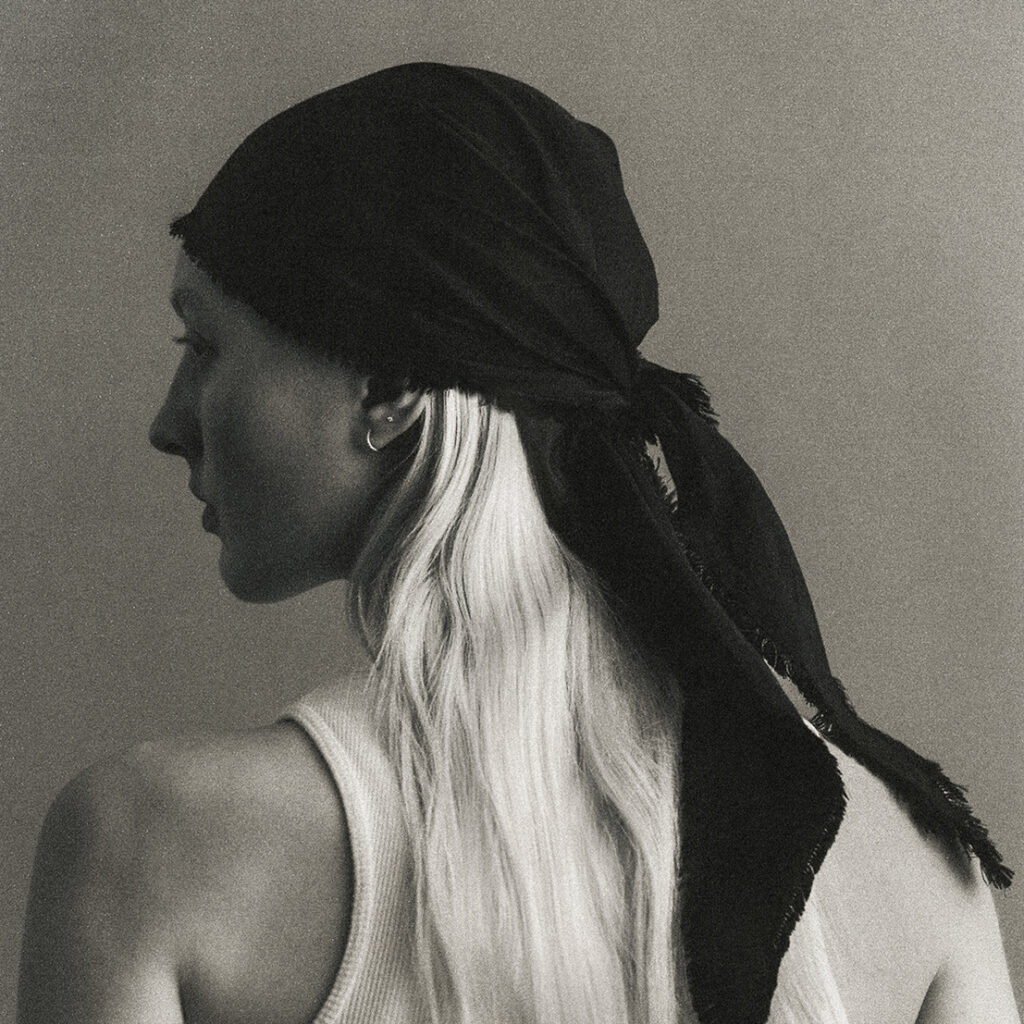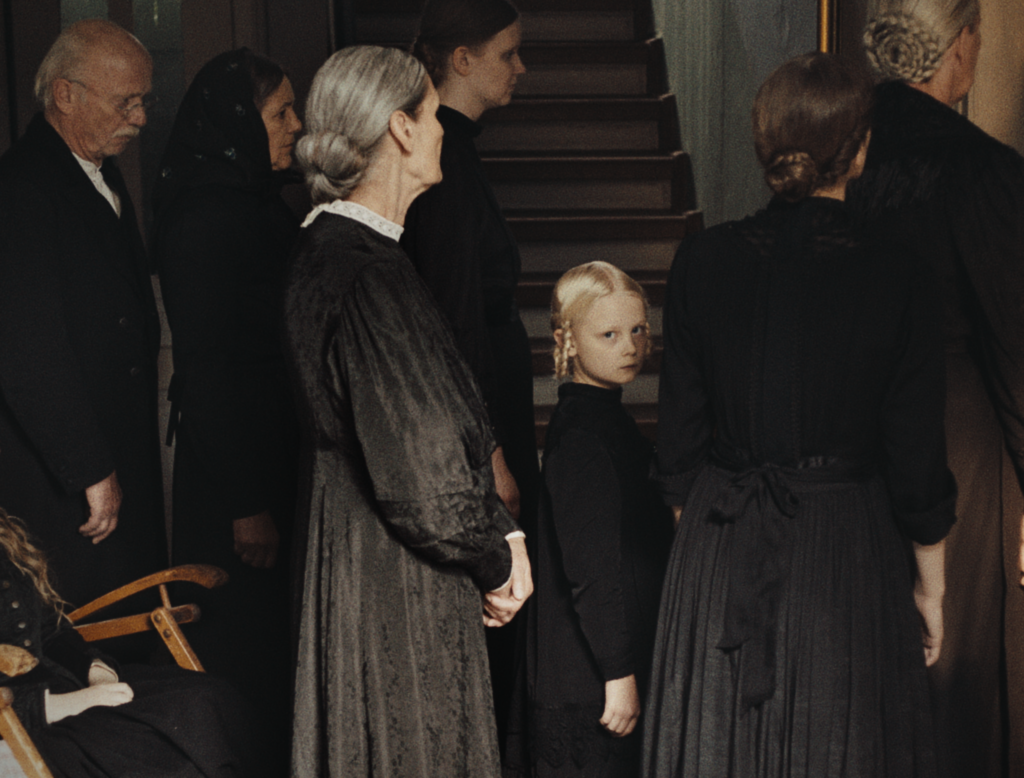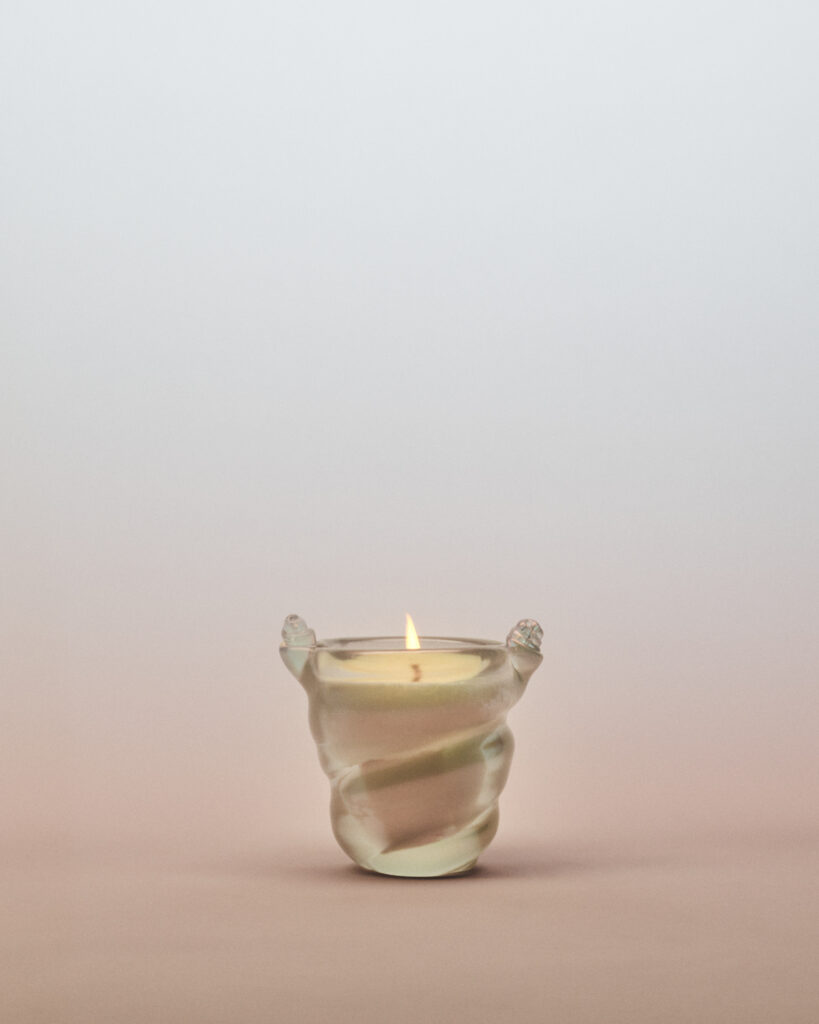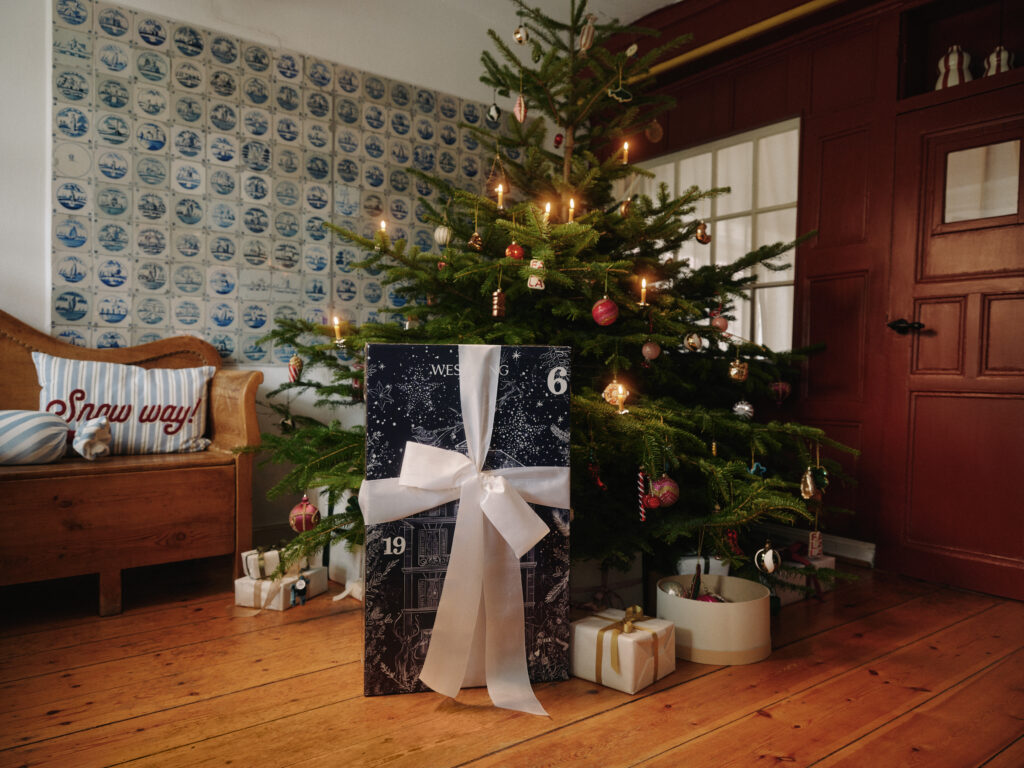ROOM FOR THE LIFE - An Interview with Lan Krebs
text Maya Avram
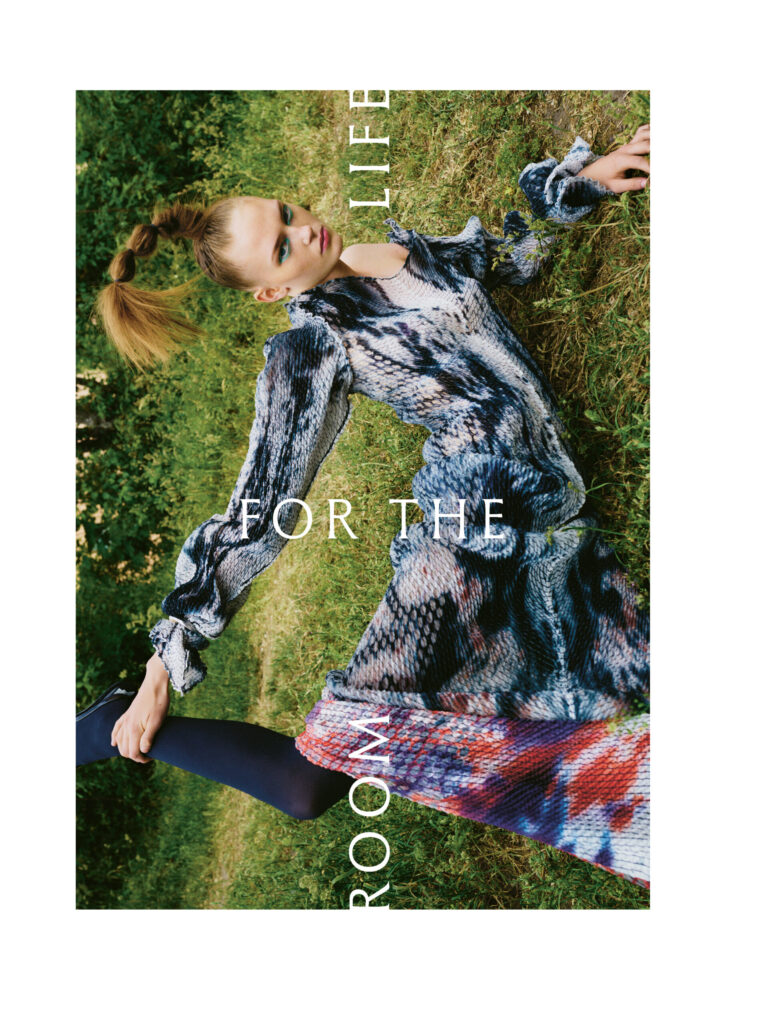

stockings Swedish Stockings
shoes Stylist’s Own
jewellery Maria Nilsdotter
Lan Krebs designs with his head in the clouds and strategises with his feet on the ground. Yes, he was inspired to become a designer from a young age, with romantic ideas about leaving his native Slovenia and going out into the world to make a big name for himself. But his path to the prestigious Swedish School of Textiles has been meticulously calculated, with Lan often making creative choices out of necessity and in response to challenges that, in the end, led him to where he says he was always meant to be.
Maya Avram: How did your journey into design start?
Lan Krebs: I have always been interested in design, ever since I can remember. In primary school, I said I would be a fashion designer one day. My father was a bit terrified, but my mother said I should do what makes me happy. I was too late to apply for the Swedish School of Textiles, but everything happens for a reason, and I went there on Erasmus… After three months, they offered me a full-time study position, so I stayed.
MA: What made you want to specialise in knitwear?
LK: During my bachelor’s programme, I took a knitwear class, where the teacher introduced us to a guy who was selling old hand-knitting machines and yarns. That was when I knew I wanted to be a knitwear designer. I bought a knitting machine from him and some yarn, and started my journey.
I’m very passionate about this practice because it holds unlimited possibilities. Knitting splits into circular knitting and flatbed knitting. When I started studying at the Swedish School of Textiles, my idea was to do flatbed, but we had limited access to those machines, which was very frustrating, so I decided not to go in that direction. I wanted to be free with my time, with materials, so I asked the lab technicians which machine is the most available one, and does not require their help to operate. I wanted to handle the machine on my own because it was the only way I could get more time on it, so that I could really hack it, even if it’s very manual. They said the circular single jersey machine is the only one that I can really handle by myself. It all came from that.

bracelet ANI Jewels
sneakers PUMA / Zalando
bracelet Edblad
stockings Swedish Stockingss
heels Christian Louboutin
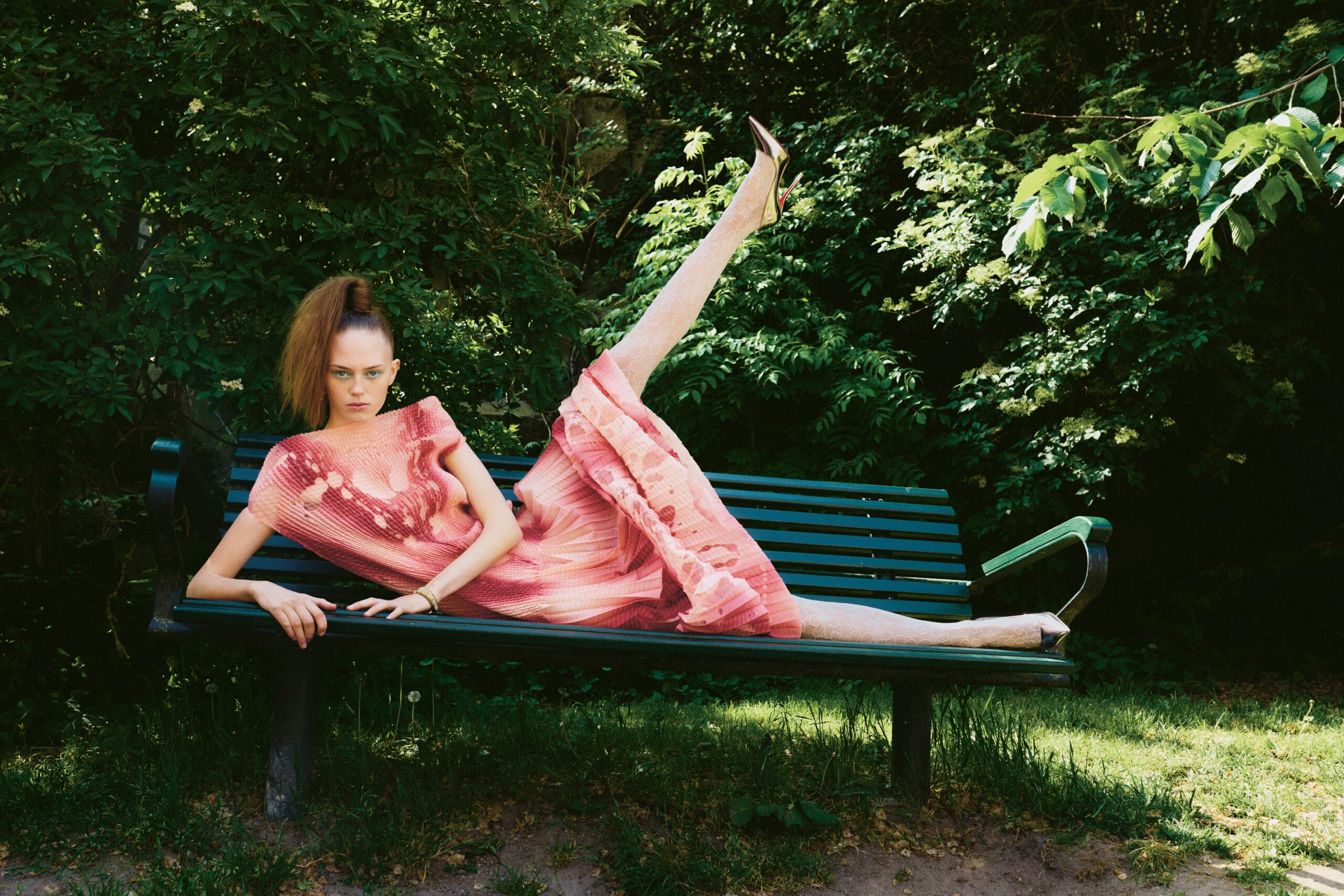
MA: Sounds very responsive.
LK: The machine itself is very simple, all I can knit with it is plain single jersey or striped — that’s it. No jacquard, nothing, just stripes in different variations. The technician was really happy I chose that machine because, according to him, “It doesn’t need to be complicated when it comes out of the machine. You can make it into so much more after.”
Then I developed my material, and because I cannot do jacquard on that machine, I said, okay, let’s do print. This idea came very naturally, since the woven pieces are symmetrical and have this butterfly effect because they come out of the machine shaped like a tube. I didn’t want to cut this tube and do any additional sewing. I just wanted the tube to somehow fit the body, and the only way to do that was pleating, which makes the knit very elastic.
This is the process. Not so much “This is my inspiration, a tribute to my Slovenian heritage”, but a response to restrictions that we had, and wanting to get as much as I can out of the school’s facilities. Every part of my journey happened as it should have. It was a nice period of experimentation with different materials, of finding the techniques that drive me.
bracelet ANI Jewels
stockings Swedish Stockings
earring Maria Nilsdotter
heels Christian Louboutin
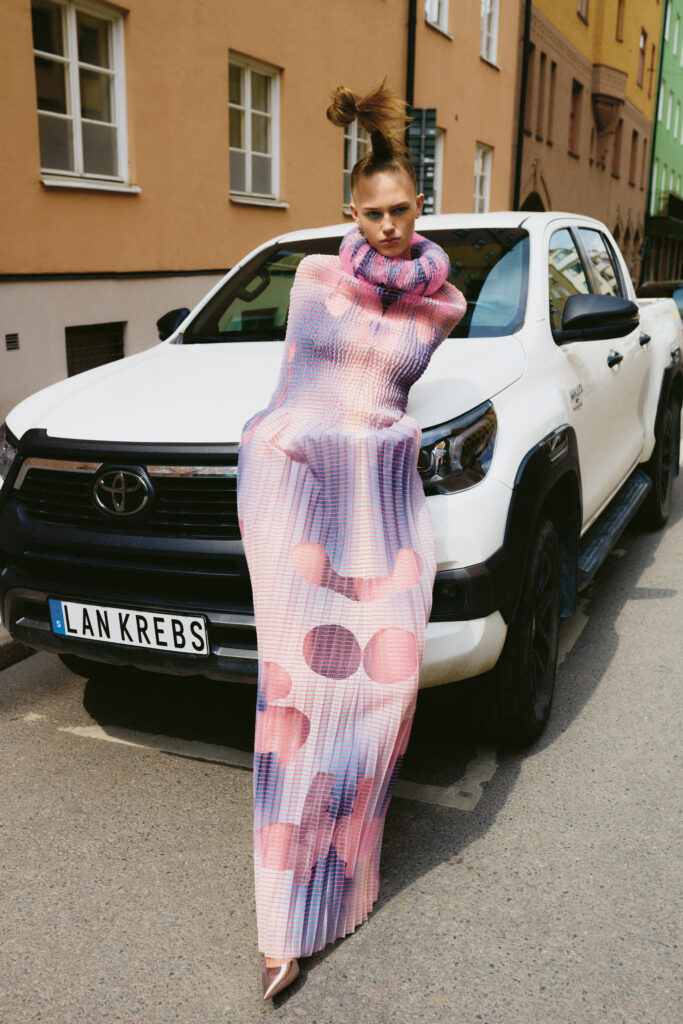

MA: If your creative practice came out of cold calculation, how does your creativity come into play?
LK: This exploration process needs to be very intuitive. In my case, I don’t even do samples. The technicians in the print lab asked if I’d like to test colours, and I said no, it’s a waste of time. When dying fabric — it’s called space dying — I place wet fabric on a table, and I then start staining it with pigment. If I want the pigment to “bleed”, I add more water. It’s really hard to measure and control this process, making it impossible to achieve the same effect twice, so there is no reason to do samples. You just need to follow your gut and have a little bit of luck on your side.
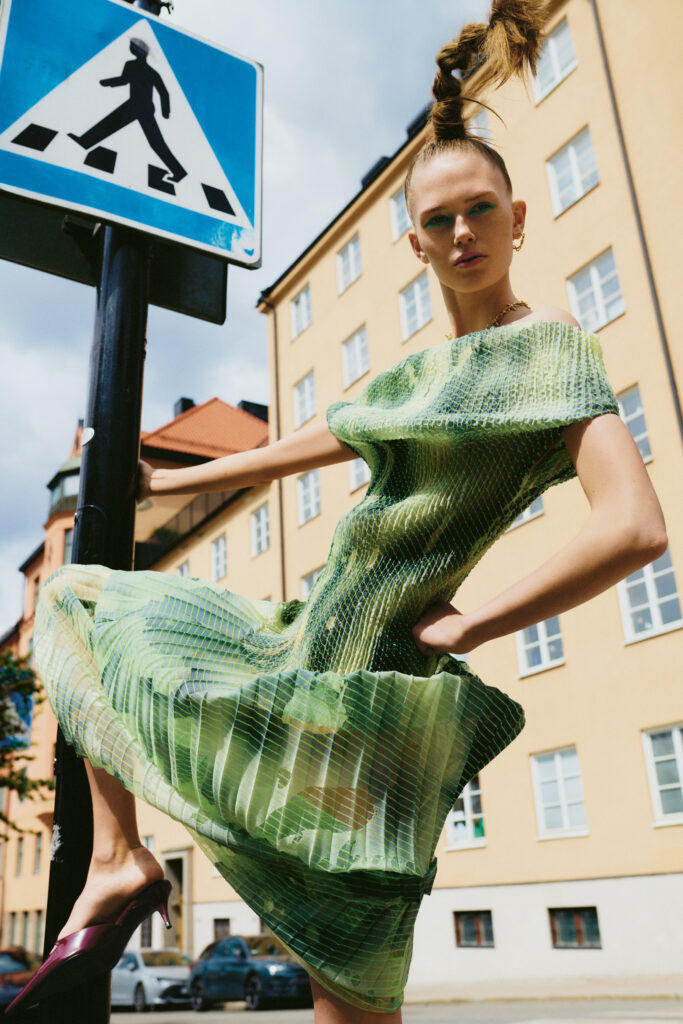
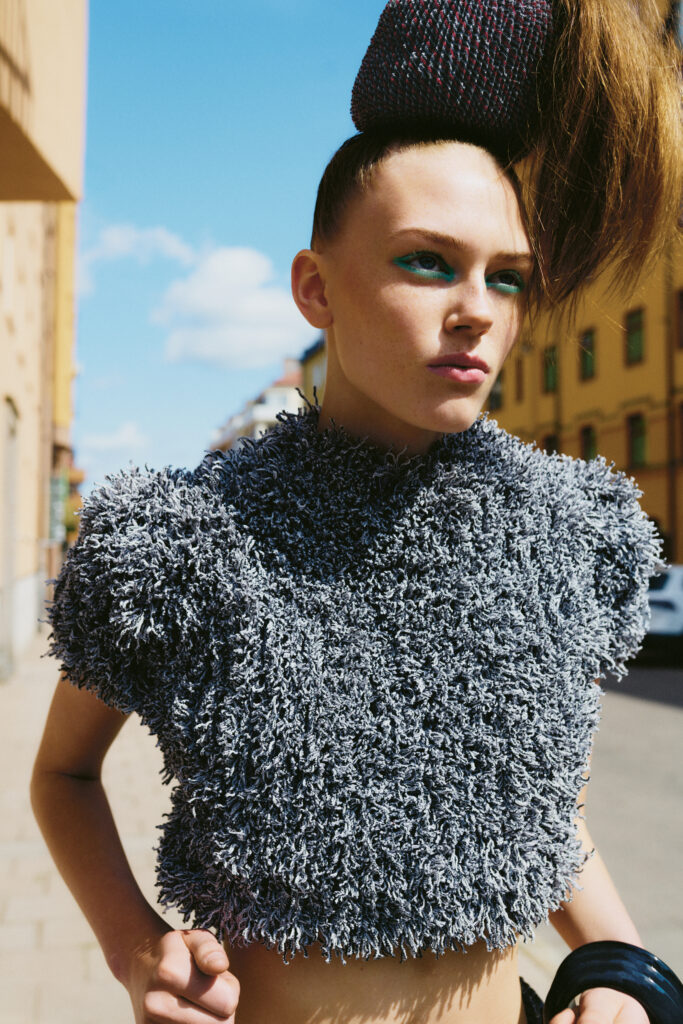
bracelet ANI Jewels
ewellery Maria Nilsdotter
jewellery Maria Nilsdotter
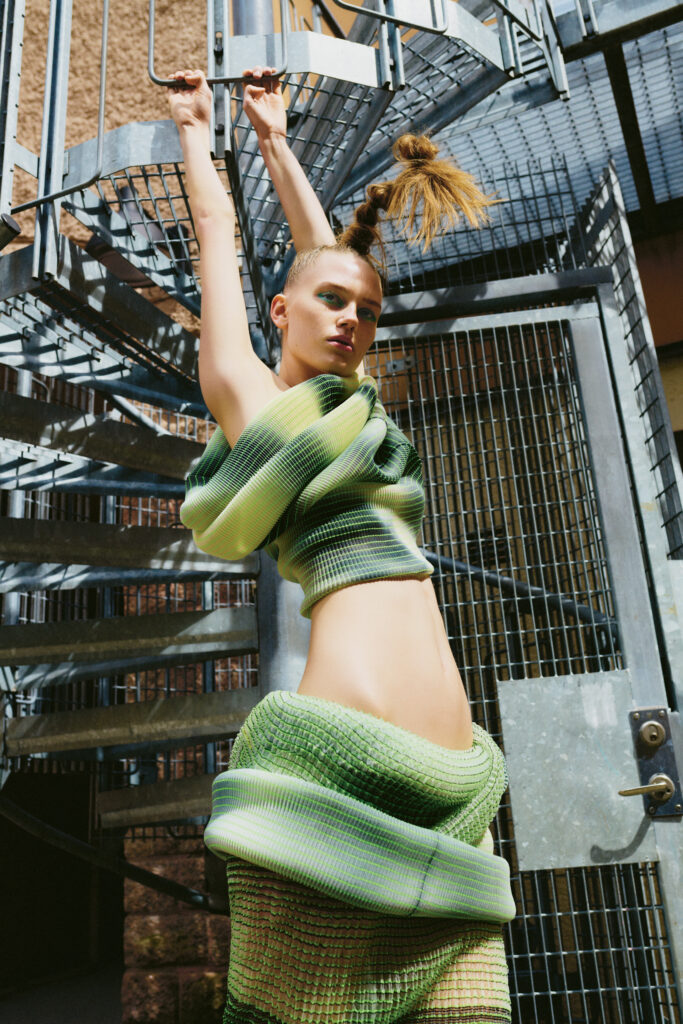
MA: There seems to be a clear distinction between your design process, which is very intuitive, to your self-promotion, which is more strategic.
LK: It’s key to getting more attention and having eyes on you. Social media is how you present yourself, how you build a name for yourself, and it’s something that a lot of students are afraid of. It takes time to create a post, and it takes time for your post to perform. I do social media for Fashion Week in Ljubljana, and I tested so many tricks to make a post work, to figure out why some posts work better than others. I’m applying that knowledge to my own profile.
If you share your process, for example, people will engage with it. They will like it, they will comment on it, they will save it, and they will send it to someone else. I can show the final result, but the process is the part that really resonates with people and expands my reach.
MA: How else are you innovating your process?
LK: I’m using the burnout technique, which is toxic from a sustainability point of view. My garments are made of polyester for pleating, but they’re not mass-produced — I think of them as pieces of art, one of a kind and no two are alike.
So while sustainability is important, creating something durable, something that has value in the long term, something that has design integrity — it’s already sustainable. It’s not all about material, about only using organic cotton — it’s about good design. My design is sustainable because I don’t create things that will be thrown away after five uses, but will be kept forever. People who own collector pieces that are very expensive and very delicate, and very hard to make take better care of those pieces than a cotton T-shirt that costs five Euros. So something that is made out of polyester can be sustainable too, not just because of the material, but because of the way it’s made or designed.

